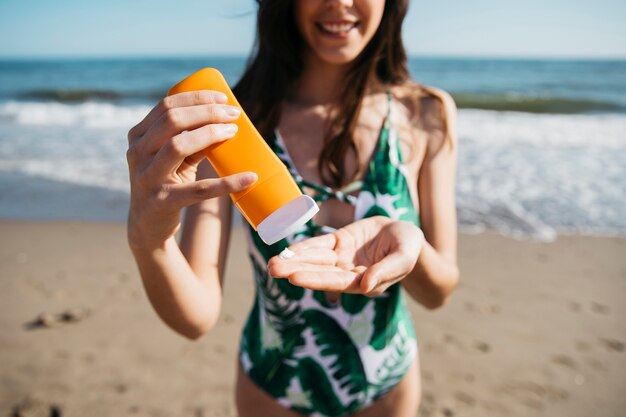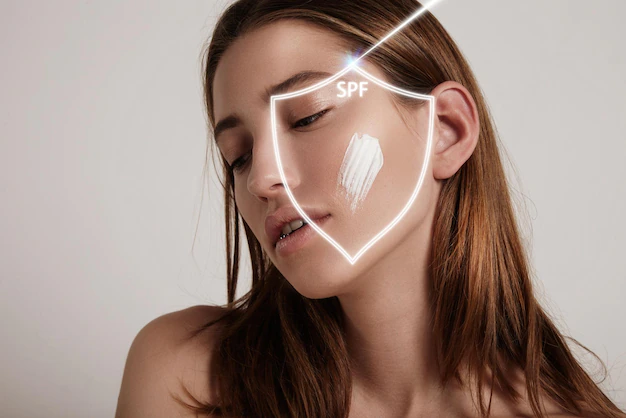Introduction
Stepping outside? There’s one item you should never forget—sunscreen. From preventing premature aging to lowering the risk of skin cancer, sunscreen is your ultimate shield against harmful UV rays. But not all sunscreens are created equal, and choosing the right one can be overwhelming with so many options on the market.
Whether you’re a skincare enthusiast looking to amplify your routine, a parent ensuring the family is protected, or an outdoor lover who spends hours under the sun, this guide will simplify the process of finding the perfect sunscreen. By the time you’re done reading, you’ll know exactly what to look for, how to use it effectively, and why it’s one of the most essential steps in your daily routine.
Understanding SPF and Broad-Spectrum Protection
What is SPF?
SPF, or Sun Protection Factor, measures how well sunscreen shields your skin from UVB rays, the ones that cause sunburn and skin damage. The number indicates how long you’re protected before your skin starts to redden compared to going unprotected.
For example:
- SPF 15 blocks roughly 93% of UVB rays.
- SPF 30 blocks about 97%.
- SPF 50 blocks up to 98%.
But, higher SPF numbers don’t mean you can skip reapplication! All sunscreens wear off over time, especially with exposure to sweat, water, or rubbing.
The Significance of Broad-Spectrum Protection
While SPF protects against UVB rays, broad-spectrum sunscreen shields your skin from both UVB and UVA rays. UVA rays penetrate deeper into the skin, contributing to wrinkles and premature aging. Broad-spectrum protection ensures you’re fully covered for long-term skin health.
Recommended SPF for Different Activities and Skin Types
- Daily Wear: SPF 30 for minimal sun exposure (e.g., commuting or casual errands).
- Outdoor Activities: SPF 50, especially if you’re hiking, swimming, or gardening.
- Sensitive Skin or Fair Skin: Opt for SPF 50+ to minimize risk.
- Kids: Choose SPF 50 to protect their more delicate skin.
Sunscreen Ingredients: The Good, The Bad, The Safe
Common Ingredients to Know
- Mineral-Based Sunscreens (Physical): Use zinc oxide or titanium dioxide to create a barrier on the skin. Ideal for sensitive skin and children.
- Chemical Sunscreens: Contain ingredients like avobenzone and oxybenzone that absorb UV rays. Lightweight and great for daily wear under makeup but may trigger sensitivities for some.
Allergies, Sensitivities, and Environmental Impact
Chemical sunscreens with oxybenzone or octinoxate have raised concerns for environmental reasons, particularly their potential to harm coral reefs. Many brands now offer “reef-safe” alternatives. Check labels to ensure it’s eco-friendly if you’re hitting the beach.
Emerging Safer Options
Formulas are getting better every year! Look for sunscreens that combine antioxidant-rich ingredients to protect against free radicals, or hybrids blending mineral and chemical components for the best of both worlds.

Choosing the Right Sunscreen for Your Needs
For Different Skin Types
- Oily Skin: Look for non-comedogenic, oil-free options. Gel-based or matte-finish sunscreens are ideal.
- Dry Skin: A hydrating sunscreen with added moisturizers like hyaluronic acid works best.
- Sensitive Skin: Mineral sunscreens with zinc oxide or titanium dioxide reduce irritation.
For Different Ages
- Babies (6 months+): Use fragrance-free, mineral-based sunscreen.
- Teens and Adults: Skin needs vary, so tailor choices based on skin type and activity.
Water-Resistant vs. Regular Sunscreen
Water-resistant sunscreens are a must for swimming, sweating, or humid conditions. They stay effective for around 40 to 80 minutes in water, but don’t forget—reapply after toweling off.
For Various Activities
- Swimming or Beach Trips: Pick water-resistant and reef-safe sunscreens.
- Sports & Hiking: Opt for sweat-resistant SPF sprays or sticks for easy application.
- Everyday Protection: Lightweight formulas (like moisturizers with SPF) are perfect for daily wear.
Application Tips for Maximum Protection
How Much to Apply
Use the “shot glass” rule—about 1 ounce (a shot glass full) is enough to cover your entire body. For your face alone, aim for roughly a nickel-sized amount.
When and How to Apply
Always apply sunscreen 15 minutes before sun exposure to allow it to fully absorb. Don’t skip these often-missed spots:
- Ears
- Neck and back of hands
- Scalp (or use a sunscreen spray here)
Reapplication is Key
Reapply every 2 hours, or right after swimming, sweating, or towel drying, even if the sunscreen is labeled water-resistant.
Avoid Common Mistakes
- Don’t rely on makeup with SPF as your sole protection.
- Apply sunscreen even on cloudy days—up to 80% of UV rays can penetrate through clouds.
- Make sunscreen part of your winter routine too! Snow reflects UV rays, increasing exposure.
Sunscreen Myths Debunked
- Myth 1: “I don’t need sunscreen on cloudy days or when I’m indoors.”
Reality: UV rays can still reach your skin through clouds and even glass.
- Myth 2: “A base tan protects my skin.”
Reality: A tan is your skin’s damaged response to UV exposure, not protection!
- Myth 3: “Sunscreen with a higher SPF lasts longer.”
Reality: All sunscreen requires reapplication for continuous protection, regardless of SPF.
- Myth 4: “Sunscreen expires, but it’s okay to keep using it.”
Reality: Expired sunscreen loses its effectiveness. Check expiration dates and replace regularly.
Make Sunscreen Your Daily Must-Have
Taking care of your skin starts with proper sun protection, and choosing the right sunscreen can make all the difference. Equip yourself with SPF that matches your unique lifestyle, and use it consistently for maximum benefits.
Don’t forget—sunscreen isn’t just for the summer. Use it year-round to protect against harmful UV rays and maintain healthy, youthful skin.
Share this guide with your friends and family—because great skin and sun safety are for everyone!
